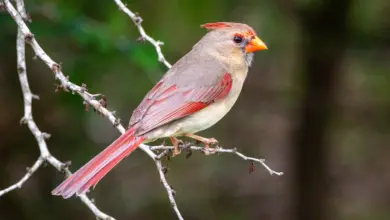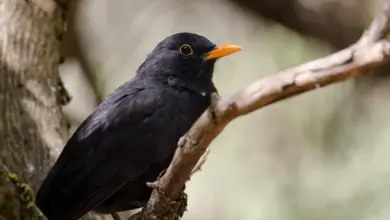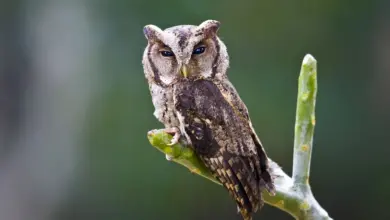Bare-legged Owls or Cuban Screech-owls
The Bare-legged Owls (Gymnoglaux lawrencii) – also known as Cuban Screech Owls – are endemic to Cuba and the adjacent Isla de la Juventud or “Isle of Youth” (formerly known as the Isle of Pines or Isla de Pinos).
These owls inhabit dry forests, lowland moist forests as well as heavily degraded former forest. Within their range, they are the only small owl present.
The Bare-legged Owls are fairly common over their restricted range and can be found in wood areas, mixed palm forest, tropical dry forest and thickets. They have also adapted well to human modified landscapes
Subspecies and Ranges
- Gymnoglaux lawrencii lawrencii (P. L. Sclater and Salvin, 1868) – Nominate Race
- Found in central and eastern Cuba.
- Gymnoglaux lawrencii exsul (Bangs, 1913)
- Found in western Cuba and the Isla de la Juventud.
Description
Bare-legged Owls measure about 20 cm in length. They have a creamy facial disk with a broad dark rim, and long white “eyebrows”. The plumage is dark brown above with white spots and pale grey below with faint streaks. They were named for their bare legs
Their brown, forward-facing eyes are nearly as large as human eyes and are immobile within their circular bone sockets. For this reason, owls need flexible necks, as they have to turn the entire head to change views.
They have the same number of vertebrae in their necks as most mammals and can move their heads 270 degrees in either direction (nearly all the way around!).
Most other bird species have their eyes on the sides of their heads enabling them to see sideways and, to some extent, backwards. Owls, on the other hand, have both eyes in the front which enhances their depth perception.
Owls are far-sighted, and are unable to clearly see anything within a few inches of their eyes. Their far vision – particularly in low light – is, however, exceptional.
To protect their eyes, Owls have 3 eyelids – one upper and one lower eyelid. The upper lid closes when the owl blinks, and the lower closes when the Owl sleeps. The third eyelid – called a nictitating membrane – is a thin layer of tissue that closes diagonally across the eye, from the inside to the outside. The purpose of these membranes is to clean, moisten and protect the surface of the eyes.
Breeding / Nesting
Bare-legged Owls generally nest in tree cavities, sometimes those excavated by Woodpeckers. Records also exist of them nesting in the crevice on cliffs. They typically reuse nests several years in a row. The average clutch consists of 2 eggs.
Diet / Feeding
They mostly feed on large insects and to a lesser extent on frogs and snakes.
Alternate (Global) Names
Czech: Výrecek kubánský, výre?ek kubánský … Danish: Cubadværghornugle … Estonian: kuuba päll … Finnish: Kuubanpöllönen … French: Gymnoglaux lawrencii, Petit-duc de Cuba, Scops de Cuba … German: Kubaeule … Italian: Assiolo di Cuba … Japanese: yubinagafukurou … Norwegian: Gulbeinugle … Polish: syczek kreskowany … Russian: ????????? ????, ????????? ?????, ????? ????????? … Slovak: výrcek kubánsky, výr?ek kubánsky … Spanish: Autillo Cubano, Sijú Cotunto … Swedish: Kubansk dvärguv
Owl Information … Index of Owl Species
Beauty Of Birds strives to maintain accurate and up-to-date information; however, mistakes do happen. If you would like to correct or update any of the information, please contact us. THANK YOU!!!





